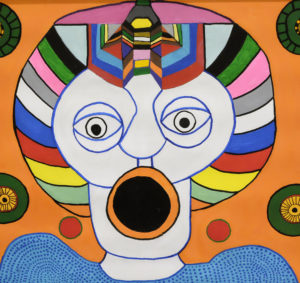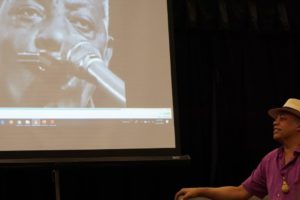Roscoe Mitchell — internationally renown composer, improviser, ensemble leader, winds and reeds virtuoso who has pioneered the use of “little instruments” and dramatic shifts of sonic scale in the course of becoming a “supermusician . . .someone who moves freely in music, but, of course, with a well established background behind . . .”* reveals […]
Digging Our Roots videos, speakers inspire engagement
Musicians and journos with insights into historic hits can offer curious audiences low-cost interactive experiences that bond most everybody present, like any successful performance.


